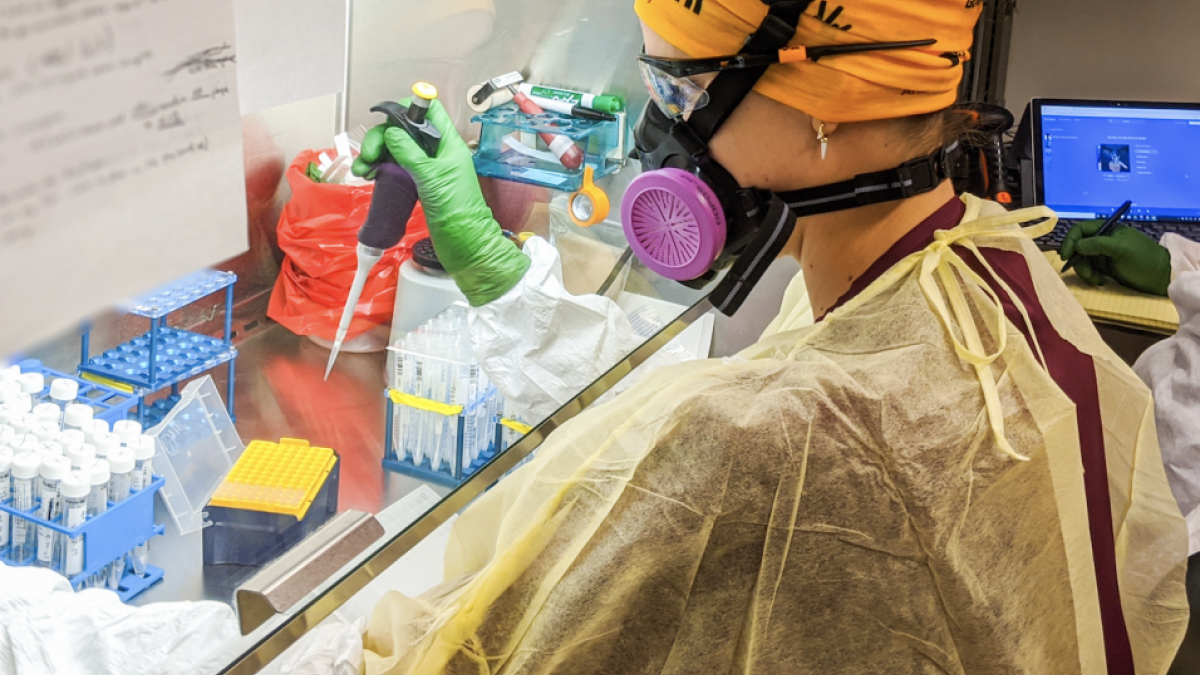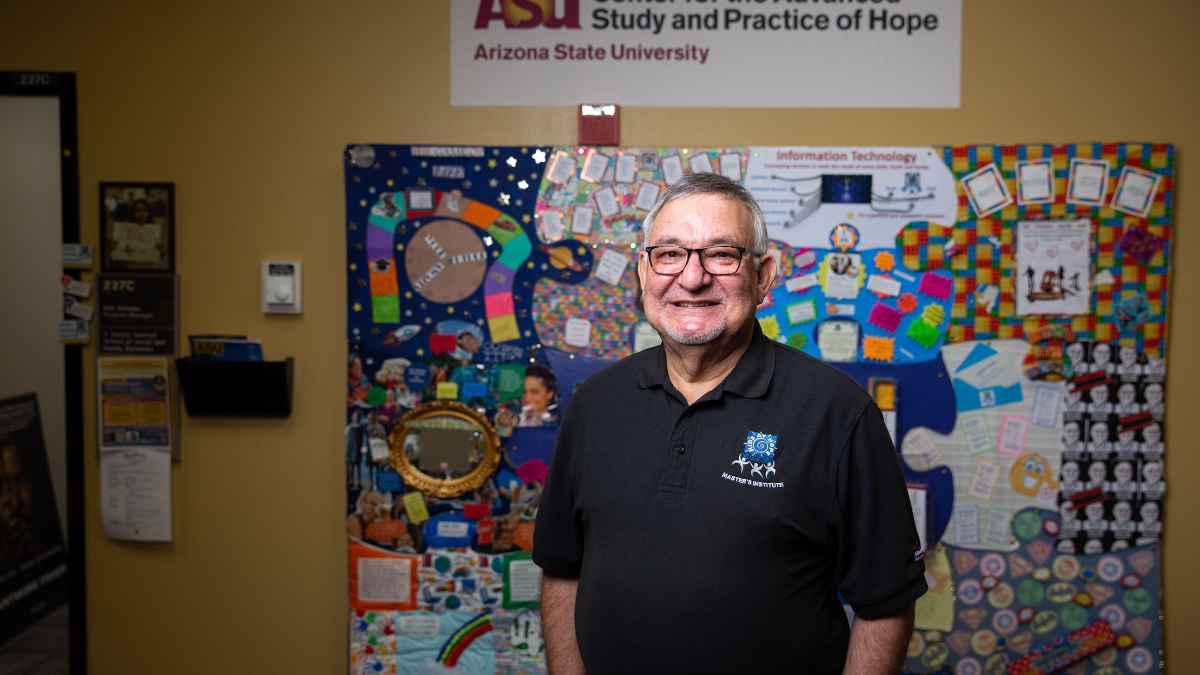In 1776, when members of the Second Continental Congress met at the Pennsylvania State House in Philadelphia to sign a document declaring the Thirteen Colonies’ independence from the Kingdom of Great Britain, they were embarking upon an experiment to prove to the world that the common man could govern himself.
The democratic gamble paid off, resulting in one of the most successful countries in the world.
If America’s forefathers were able to recognize that everyone is equally capable and worthy of pursuing the life they desire, mused ASU Sanford School Professor of Practice Richard Miller, “shouldn’t we have a similar commitment to our young people, to prove to the world that all kids are capable of success, no exceptions?”
That mantra has been the driving force behind Miller’s lifelong commitment to challenge the prevailing conventional wisdom of youth at risk. The culmination of that work, the not-for-profit organization Kids at Hope (KAH), was founded in 1999 with ASU’s support as a research partner and the goal of changing the way America thought about its kids.
Over the years, Miller maintained a strong relationship with ASU, even teaching courses on not-for-profit management and youth development as a practitioner in residence for the Lodestar Center. But he always felt there would come a point in time when he had established a strong enough body of evidence of the efficacy of his initiative’s practices that could be combined with the research prowess and infrastructure of the university to take this new “science of hope” to the next level.
That time is now. A series of events will celebrate the launch of the Center for the Advanced Study and Practice of Hope, a unit of the T. Denny Sanford School of Social and Family Dynamics.
Antwone Fisher, whose personal story of hope inspired a film that bears his name starring Denzel Washington, will be joining the festivities for a screening of the film from 6 to 9:30 p.m. Wednesday, Oct. 24 at Sun Studios, 1425 W. 14th St. in Tempe. And Valerie Calderon, who manages the Gallup Poll’s national student hope survey, will be a featured guest and presenter at a daylong series of panel discussions on Thursday, Oct. 25.
The film screening is open to the ASU community and general public. There is limited seating so reservations are required. More info can be found on the center’s website.
“The biggest reason for taking this next big step is to bring together in a very comprehensive and integrative way the three arms of what needs to happen when we talk about the promotion of the success of all children with no exceptions,” said Sanford School director and Professor Richard Fabes.
The first arm is a strong evidence-based research foundation that establishes best practices to help children and the adults who care for them be more effective in promoting their success. The second arm is academic and involves creating a unique curriculum that allows hope to be taught and fostered, whether in K–12 classrooms, college lecture halls or corporate environments. And the third is the clinical arm, which translates research and curriculum into actionable plans.
“This center is the combination of the scientific, academic and clinical practices, not just standing as individual separate pillars, but truly integrated to advance the science of hope and make a difference at scale,” said Fabes, co-executive director of the new Center for Hope.
Miller’s career in youth development began in 1983 when he was hired as president executive director for The Boys and Girls Clubs of Metro Phoenix. But his interest in the field began when he was much younger.
As a 16-year-old high school sophomore in Southern California, Miller watched with dismay as several of his Mexican-American classmates dropped out. He was certain that the reason was that nobody cared, and made the decision then and there to be the one person who did.
That was 54 years ago. Every step he’s taken in his career since then, Miller says with pride, has been with that in mind.
“I just felt that society had found an easy excuse as to why some kids do well and other kids struggle,” he said. “And we bought into that and began to divide the world into kids with risk and kids without risk. It became a self-fulfilling prophecy; if that’s what we believe about kids, that’s what we’ll always get. So I thought, what if we change the belief?”
The organization operates on four research conclusions: 1. It’s not risk factors that prevent kids from being successful, it’s the absence of hope. 2. Adults who interact with children — from teachers to parole officers to bus drivers — don’t control any of the risk in children’s lives, but they do control much of the hope. 3. Hope can be taught and learned in the same way as reading, writing and arithmetic. 4. It’s not programs or curriculum alone that make the greatest difference in children’s lives, it’s meaningful relationships with caring adults.
Based on the four research conclusions are three cultural frameworks and five practices that emphasize a change in culture, rather than prevention methods, in order to engage adults in children’s lives in ways that encourage hopeful thinking about their future.
All of this is taught through workshops, classes, symposiums and the weeklong Kids at Hope master’s institute.
“I think there is a change happening where we are starting to move away from deficit models that focus on what are people lacking and toward strength models that focus on their assets,” Fabes said. “The strength model is more effective and transformational because it works with strengths that individuals already possess. It flips a switch, conceptually.”
The Center for Hope at ASU will be much more than Kids at Hope, though, said Terry Rosch, co-executive director of the center and president of Kids at Hope.
Rosch met Miller in 1999 when she was in the midst of founding the Chicago Education Alliance and became one of Kids at Hope’s founding board members. She sees ASU as a great place to continue advancing hope-related research and community outreach.
“The mission of the Center for Hope is to encourage partnerships, conduct research and expand or develop activity that will transform organizations, families, schools and entire communities to create cultures of hope where children and youth and families experience success,” Rosch said.
“Given ASU’s goal to pursue research that contributes to the public good, I felt it would be a wonderful place to host the center.”
Research at the center is already underway. One project in particular is a longitudinal study looking at connections between hope and hope assets and academic performance in first-time ASU freshmen. It demonstrates how the center will go beyond studying the role of hope in childhood success to investigating the role of hope throughout one’s life.
The relationships already in place between Kids at Hope and local schools and organizations will help advance research at the Hope Center, said associate director of research Tashia Abry, an assistant professor at the Sanford School.
“Our efforts are guided by the principal of partnership and dialogue between researchers and practitioners,” she said.
Researchers at the center are able to consult with Kids at Hope partners and advise them on the expansion of their data collection and analysis, while also collecting data for their own purposes.
“It’s one of the first, and I think will become an increasingly recognizable model by which community agencies can be integrated into the work of ASU so that these centers are not just academic or community-focused, but are true hybrids that bring the community to ASU and ASU to the community,” Fabes said.
Top photo: ASU Sanford School Professor of Practice Richard Miller poses for a portrait at the Hope Center on Tempe campus Oct. 2. Miller will be the director of the new center. Photo by Deanna Dent/ASU Now
More Health and medicine

Making medicine side-effect free
Many drugs that address medical conditions can come with serious side effects. In drug commercials, the litany of potential side effects is often longer than the benefits being touted. Carl…

Diagnostic research happening at ASU focused on detecting diseases earlier to save lives
It was one of America’s founding fathers, Benjamin Franklin, who may have foreshadowed today’s health care innovation when he quipped the adage: An ounce of prevention is worth a pound of cure.In…

Fighting the fungus among us
It starts with a spore.When inhaled, spores of the coccidioides fungus can cause coccidioidomycosis — better known as valley fever. The spores may be fungi, but they are no fun.Valley fever usually…


